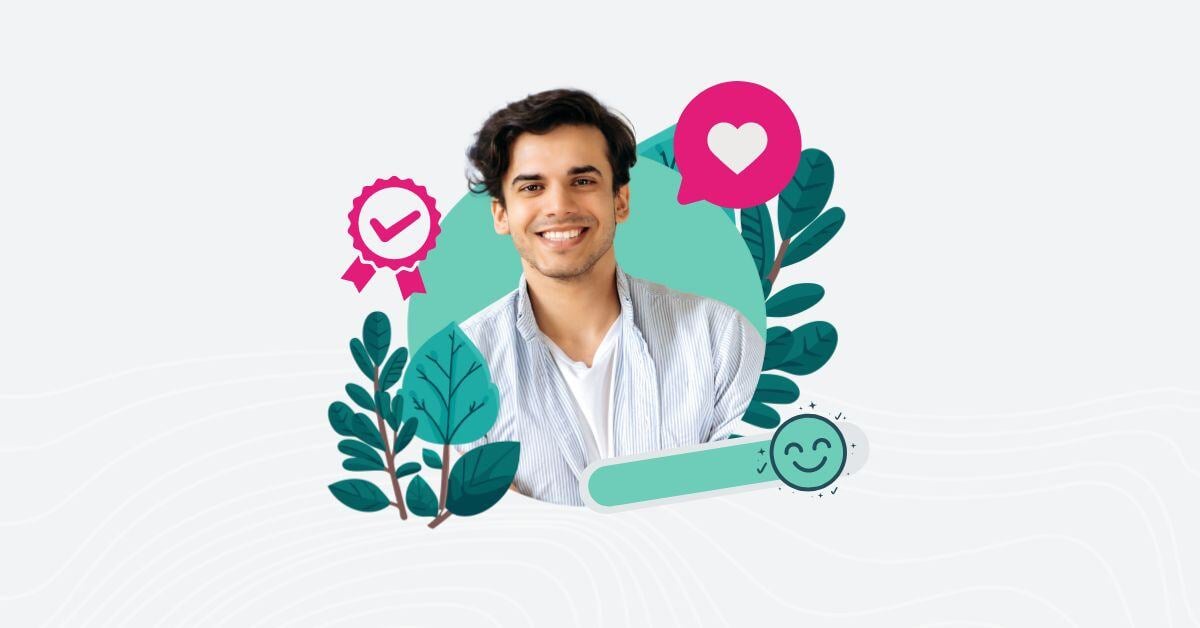How wellness programs lower employee stress
By Chase Charaba on December 26, 2023 at 7:50 AM
Work-related stress is taking its toll on organizations across the country, placing a burden on employers to do more to care for their employees.
The American Institute of Stress1 found that 83% of people suffer from work-related stress. With workplace stress costing organizations billions of dollars due to healthcare costs, absenteeism, reduced productivity, and employee turnover, employers have a strong incentive to reduce job-related stressors.
One of the best ways to lower work-related stress is to establish workplace wellness programs.
In this article, we'll explain how an employee wellness program can help lower feelings of stress while saving you time and money.
Takeaways from this blog post:
- Work-related stress is a major issue that affects a large percentage of employees, costing organizations billions of dollars.
- Implementing workplace wellness programs can help reduce stress levels and improve employee well-being.
- Wellness programs have been shown to increase employee engagement, job satisfaction, and loyalty toward the organization.
Workers with access to wellness programs are less stressed
When employees have access to wellness programs and perks, they feel less stress in the workplace.
According to the American Psychological Association’s 2022 Work and Wellbeing Survey2, 81% of employees feel how employers support mental health will be an important consideration when they look for a new role. According to the APA’s 2021 survey3, 37% of respondents said providing mental health resources would help improve their stressful work environment.
Additionally, many employees cited other benefits such as flexible work schedules, paid time off, remote work, a four-day work week, and regular breaks during the workday as ways their employers could improve mental health and reduce job stress.
The 2021 survey also asked employees what extra perk they’d like if their employer could only offer one. While 33% said they wanted a higher salary, 14% wanted more flexibility, 13% wanted more time off and wellness days, and 12% wanted additional employee benefits.
Employees want wellness programs and perks, but do they help employees feel less stressed?
Research from the International Foundation of Employee Benefit Plans4 found that 53% of organizations that offered wellness programs saw improved employee engagement and job satisfaction, a clear indicator of stress reduction.
A MediKeeper survey5 analyzed data from more than three million workers. According to their report, employees with access to wellness programs at work saw lower stress levels than those without.
Sources of stress for employees
One of the best ways to reduce work-related stress and improve employee well-being is to identify the major stressors in your organization.
Potential causes of workplace stress include:
- Poor work-life balance
- Poor management
- Pressure to meet rising standards or expectations
- Lack of control over how employees do their work
- Lack of communication
- Lack of job security
- Lack of growth or career advancement
- Lack of PTO
- Heavy workloads
- Low salaries
- Working long hours
- Workplace conditions
- Commuting
Furthermore, outside stressors can impact employees' performance at work. These stressors include employees' financial status, health status, and family.
Once you've identified a major source of job stress for your employees, you can design an effective employee wellness program that addresses each employee's individual needs.
How wellness programs benefit employees
Establishing a wellness program reduces employee stress and healthcare costs, and it can also improve employee retention and promote a better work environment.
According to MetLife's 2023 Employee Benefits Trends Study6, employees who feel cared for by their employer are 65% more likely to show loyalty toward the organization.
The Centre for Economic Performance7 also looked at 339 independent research studies from Gallup and found a strong correlation between employees' satisfaction resulting from higher well-being and employee retention.
Employees who are less stressed and more satisfied with their benefits are more productive and less likely to be absent. This is because they can focus on the task at hand instead of worrying about their stressors.
How to start a wellness program
There are many different types of workplace wellness programs. They can be as simple or complex as you'd like, but they need to address your employees' needs.
Some of the most common elements of worksite wellness programs are:
- Smoking cessation programs
- Employee health screenings
- Nutrition education
- Health risk assessments
- Health insurance or health plans
- Biometric screenings
- Weight loss programs
- Stress management programs
- Gym membership
- Wellness stipends
To make the most out of your program, you'll want to incorporate many different facets of wellness, including physical health, mental health, emotional health, social well-being, and financial wellness.
Health and wellness benefits
Don't forget to offer your employees health and wellness benefits when constructing your wellness program. These are great additions to your in-office or remote activities that can help boost office morale, productivity, and the overall wellness of your workers.
When choosing benefits to offer your employees, personalized benefits are the way to go. Personalized benefits allow your employees to choose how they use their benefits.
Personalized health benefits
Supporting your employees' physical and mental health is one of the most important aspects of any wellness program. Thankfully, there are many types of health plans available.
While traditional group health insurance is a popular option, many organizations choose more cost-effective alternatives that give their employees more control over their benefits.
Health reimbursement arrangements (HRAs) are an excellent option for businesses that want to offer an individualized experience while still providing a tax-advantaged benefit like health insurance. An HRA allows you to reimburse employees for their qualifying medical expenses and, depending on the type of HRA, individual health insurance premiums.
Three of the most popular types of HRAs are:
- Qualified small employer HRA (QSEHRA)
- Individual coverage HRA (ICHRA)
- Group coverage HRA (GCHRA), also known as an integrated HRA
You can also offer your employees a taxable health stipend. This allows you to reimburse employees much like an HRA, except there are fewer restrictions on what expenses are eligible. They're also an excellent option for organizations with employees who receive advance premium tax credits (APTC) for their individual insurance plans.
Offering health benefits like HRAs and health stipends are great ways to give your employees money back for their physical and mental health costs.
Wellness stipend
A taxable wellness stipend is another great perk to offer your employees in addition to your wellness program. A wellness employee stipend enables you to reimburse your employees for their wellness expenses. Simply set up a monthly allowance for reimbursement.
Wellness stipends help bridge the gap between in-office wellness initiatives and wellness at home. This is because a stipend can reimburse employees for their gym memberships, fitness classes, exercise equipment, wellness mobile apps, and more.
By offering a wellness stipend, you'll allow your employees to de-stress and improve their well-being outside of the workplace, in addition to their participation in wellness programs.
Conclusion
Your average employee has to balance many responsibilities in their professional life and personal life, which inevitably leads to tension and stress. Employers can do their part to ease employees' stress and improve mental health by implementing wellness policies that make your workplace an environment where employees want to be.
Creating a wellness plan that addresses physical health, mental health, social wellness, and finances will ensure that your employees are healthy in all areas of their lives.
If you're ready to add health and wellness benefits to your new wellness program, PeopleKeep can help! Our HRA administration software makes it easy to set up and manage your benefits in minutes.
This blog article was originally published on February 21, 2017. It was last updated on December 26, 2023.
- https://www.stress.org/workplace-stress
- https://www.apa.org/pubs/reports/work-well-being/2022-mental-health-support
- https://www.apa.org/pubs/reports/work-well-being/compounding-pressure-2021
- https://welkinhealth.com/workplace-wellness-programs-managing-stress-at-its-source/
- https://medikeeper.com/about/press/workplace-stress/
- https://www.metlife.com/content/dam/metlifecom/us/noindex/pdf/ebts-2023/MetLife_EBTS_2023.pdf
- https://ideas.repec.org/p/cep/cepdps/dp1605.html
Check out more resources
See these related articles

How to improve employee retention with a workplace wellness program
Boost employee retention with workplace wellness programs. Explore effective employee wellness ideas to improve satisfaction, health, and productivity.

How to keep your employees happy and healthy at work
Create a positive and healthy work environment with these techniques. Boosting employee wellness is key to maximizing productivity and reducing absenteeism.

Job satisfaction factors: Identifying the right benefits
Learn the key job satisfaction factors and how to identify the right benefits to boost employee morale, retention, and overall workplace happiness.



